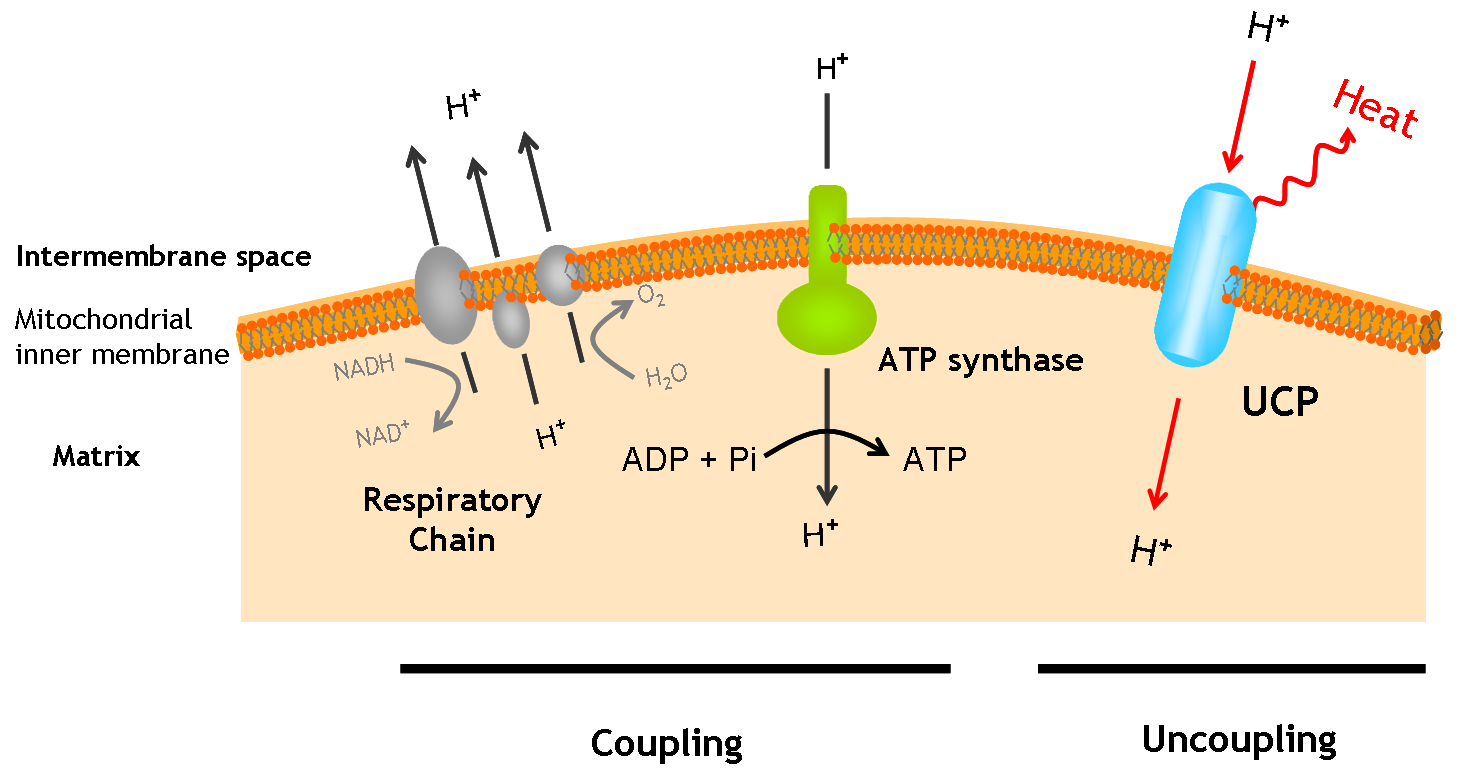Team:Valencia/Project
From 2008.igem.org
| Line 33: | Line 33: | ||
Why could be useful a living cell which control its internal temperature? | Why could be useful a living cell which control its internal temperature? | ||
| + | |||
| + | In the beginning we thought in this concenpt just as an idea which could be interesting from the conceptual point of view. It includes a protein which uncouples the respiratory electron transport chain producing a reduction of the oxygen level and a substitution of energy in the form of ATP by energy in the form of heat. Nevertheless after this first stage, the group have a brainstorming to see which could be the possible fields of application of this kind of processes and from that we though: | ||
| + | |||
| + | * You could have a living cell which maintain its temperature among certain levels without the necessity of introduce external heat to the system. Considering that the enzymatic activity usually have a strong dependence on the temperature. This system will allow to reduce the electricity cost of producing an specific reaction. | ||
| + | |||
| + | |||
| + | |||
| + | |||
<br></div> | <br></div> | ||
</div> | </div> | ||
Revision as of 11:47, 10 September 2008
Heat is vital for life. Many living forms are unable to maintain its temperature in an adequate range; while others keep it constant using several biochemical mechanisms. We thought it would be really interesting to implement some of these biological tools in an organism that we could easily control.
Using yeast as our model, we aim to be able to express a common mammal protein, thermogenin, to produce heat. This process would be really useful in many industrial applications and even daily routine actions. Thermogenin is a mitochondrial membrane protein that dissipates proton gradient in heat.
We are using Saccharomyces cerevisiae strains kindly handed over by Dr. Eduardo Rial. Besides, we have built our own calorimeters so as to record temperature differences.
In a later stage, we expect to control these temperature differences to optimize the possible applications. Consequently, we will implement a regulatory system for the thermogenin gene expression.
Watch out for news from our project!
How thermogenin works
UCP1, also known as thermogenin, is an uncoupling protein found in the mitochondria of brown adipose tissue. This protein plays an important role in hibernating mammals and in human infants since it is able to generate heat. UCP1 provides an alternative pathway by which protons can reenter the mitochondrial matrix from the intermembrane space, instead of going through ATP synthase. The result is a temperature increase rather than ATP production in the tissue containing this protein family.
Applications
Maybe some of you are asking to yourselves:
Why could be useful a living cell which control its internal temperature?
In the beginning we thought in this concenpt just as an idea which could be interesting from the conceptual point of view. It includes a protein which uncouples the respiratory electron transport chain producing a reduction of the oxygen level and a substitution of energy in the form of ATP by energy in the form of heat. Nevertheless after this first stage, the group have a brainstorming to see which could be the possible fields of application of this kind of processes and from that we though:
- You could have a living cell which maintain its temperature among certain levels without the necessity of introduce external heat to the system. Considering that the enzymatic activity usually have a strong dependence on the temperature. This system will allow to reduce the electricity cost of producing an specific reaction.
 "
"
